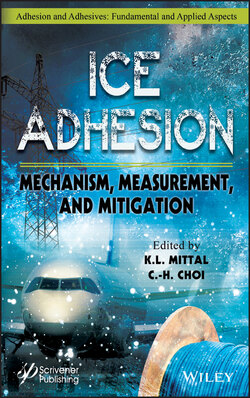Читать книгу Ice Adhesion - Группа авторов - Страница 20
1.3 The Adhesion of Ice to Surfaces
ОглавлениеAs was alluded to in Section 1.1.3, the transportation industry has spawned much of the rigorous research into surface icing. This is especially true of the aviation sector and the quest to understand the adhesion strength of ice on solid surfaces. In 1929 the Daniel Guggenheim Foundation commissioned Dr. William C. Geer to perform the first rigorous study of the problems encountered while flying in ice-forming conditions. He concluded his work by suggesting the idea that a device be built which can crack the ice formed on the leading edge of airplane wings - allowing the formed ice to be carried away by the air stream. This rubber device, known commercially as the “De-icer”, was developed by the engineers at BF Goodrich and quickly gained widespread adoption by aircraft manufacturers for use on lower speed (non-jet) aircraft [86].
Naturally BF Goodrich desired to improve their product, with the obvious goal of achieving a low value for the bond at the ice-rubber interface. This work was headed by Loughborough and Haas, leading to the first published study of the adhesion strength of ice in 1946. Loughborough and Haas comment on the effect of temperature, concluding that the shear strength of the bond between the ice and the De-icer increases linearly from 0 kPa at 0°C to 1.034 MPa at -25°C. Further, they implicitly discuss the consequences of ice formation onto a porous surface by noting that rubber which had been soaked in water presented ice adhesion shear strength 15% higher than dry rubber. The issue of surface roughness was also touched upon, with the authors suggesting that increased roughness affects ice adhesion strengths to the extent that rough substrates present greater overall surface areas. Finally, this article addressed the matter of surface free energy in determination of ice adhesion shear stress. The authors note that the addition of silicone to the rubber lowered the adhesion of ice to said surface by as much as 90 percent [87].
The seminal work of Loughborough and Haas introduced the main factors affecting ice adhesion, which are touched upon in every major subsequent publication in this area of research. These parameters include: temperature, surface roughness and porosity, and surface free energy. These factors affecting the adhesion of ice to solid surfaces are discussed in the following section.
